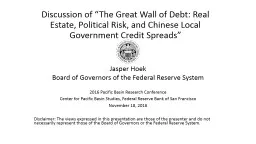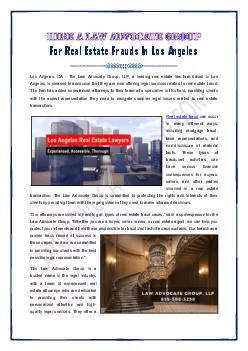PPT-Discussion of “The Great Wall of Debt: Real Estate, Political Risk, and Chinese Local
Author : karlyn-bohler | Published Date : 2018-11-05
Andrew Ang Jennie Bai and Hao Zhou Jasper Hoek Board of Governors of the Federal Reserve System 2016 Pacific Basin Research Conference Center for Pacific Basin
Presentation Embed Code
Download Presentation
Download Presentation The PPT/PDF document "Discussion of “The Great Wall of Debt:..." is the property of its rightful owner. Permission is granted to download and print the materials on this website for personal, non-commercial use only, and to display it on your personal computer provided you do not modify the materials and that you retain all copyright notices contained in the materials. By downloading content from our website, you accept the terms of this agreement.
Discussion of “The Great Wall of Debt: Real Estate, Political Risk, and Chinese Local: Transcript
Download Rules Of Document
"Discussion of “The Great Wall of Debt: Real Estate, Political Risk, and Chinese Local"The content belongs to its owner. You may download and print it for personal use, without modification, and keep all copyright notices. By downloading, you agree to these terms.
Related Documents














